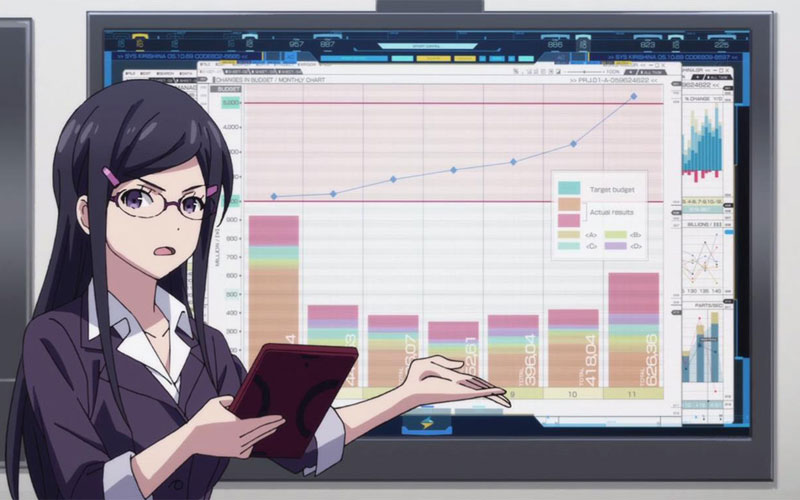The anime industry has undergone a remarkable transformation in recent years, and streaming services have played a pivotal role in this evolution. The widespread availability of platforms like Crunchyroll, Funimation, and Netflix has significantly altered how we consume and produce anime. This article explores the profound impact of streaming services on the anime industry, from content creation and distribution to the rise of “luffy pfp” culture.
Anime: A Global Phenomenon
Anime, once considered a niche subculture, has become a global phenomenon. Streaming services have made it easier than ever for fans worldwide to access a vast library of anime titles. No longer limited to a select few who could afford imported DVDs or navigate the complexities of fansubbing, anime has transcended borders and languages.
The ease of access provided by streaming platforms has expanded the global audience and influenced the types of anime produced. As studios recognize the international demand, they have started creating content with a broader appeal, which includes a diverse range of genres, themes, and art styles.
The Business of Anime Streaming
The impact of streaming services on the anime industry is not just cultural but economic. Subscription-based platforms have become a significant source of revenue for anime studios. With an ever-growing subscriber base, streaming services provide a steady income stream that enables studios to invest in higher production values and take creative risks.
In the past, many studios faced financial constraints that limited the quality and quantity of anime they could produce. However, with streaming platforms backing them, studios can allocate resources more effectively, resulting in a wider variety of content and improved animation quality.

The Advent of “Luffy PFP” Culture
While discussing the impact of streaming services on the anime industry, it’s also essential to touch on cultural aspects. One of the notable developments in recent years is the emergence of the “Luffy pfp” culture. “Pfp” stands for profile picture, and “luffy” refers to Monkey D. Luffy, the iconic protagonist of the popular anime and manga series One Piece.
This trend involves fans using Luffy’s image as their profile pictures on various social media platforms, symbolizing their love for the series and its influence on their online identity. This phenomenon demonstrates fans’ deep connection with anime and serves as a form of free advertising, as friends and followers become curious about the character and the show.
Changing Viewing Habits
Streaming services have not only revolutionized how anime is produced and promoted but also how it is consumed. Traditional television broadcasts and DVD releases used to dictate when and where viewers could watch anime. Today, the convenience of streaming services has led to a shift in viewing habits.
Fans can now binge-watch the entire series, stay up-to-date with the latest episodes, or revisit their favorite shows anytime. This flexibility has empowered viewers to engage with anime in a way that suits their schedules, creating a more personalized and immersive experience.
Global Simulcasts
One of the significant advantages of streaming services is the introduction of global simulcasts. Previously, non-Japanese fans often had to wait months or even years to watch an anime series after its initial release in Japan. However, simulcasts have become the norm with the rise of streaming platforms.
Simulcasting involves releasing episodes with subtitles in multiple languages within hours of their Japanese broadcast. This practice has reduced piracy and created a global community among anime fans who can discuss and share their thoughts on the latest episodes in real-time.
Cultural Exchange and Adaptation
The availability of anime on streaming services has facilitated cultural exchange between Japan and the rest of the world. It’s not just about non-Japanese viewers accessing Japanese content; it’s also about Japanese creators being influenced by global perspectives.
Many anime series now incorporate elements that cater to an international audience, making the content more relatable and enjoyable for a broader demographic. This interplay between cultures enriches the creative process and broadens the appeal of anime.
Challenges and Concerns
While the impact of streaming services on the anime industry has been largely positive, there are some challenges and concerns. The digital age has led to issues such as piracy and unauthorized distribution. Some fansubbing communities still thrive, and unlicensed streaming sites continue to threaten the industry’s revenue stream.
Additionally, there is an ongoing debate over whether the convenience of streaming services might diminish the importance of physical media and traditional broadcasts. Some argue that the conventional model of supporting anime through DVD and Blu-ray sales and TV broadcast deals may be in jeopardy.
Conclusion
In conclusion, streaming services have revolutionized the anime industry, transforming it into a global cultural and economic powerhouse. The availability of anime on platforms like Crunchyroll, Funimation, and Netflix has expanded the fan base, improved production values, and facilitated cultural exchange between Japan and the world. “luffy pfp” culture is just one visible manifestation of the profound impact streaming services have had on anime fandom. While there are challenges to overcome, it’s clear that streaming has firmly established itself as a cornerstone of the anime industry, ushering in a new era of creativity and accessibility.
Frequently Asked Questions:
Streaming services have profoundly impacted anime production by providing a reliable funding source. Studios can allocate more resources to create a broader range of content with higher production values. Additionally, streaming platforms have made global distribution and simulcasting possible, reducing the time gap between Japanese and international releases.
“Luffy pfp” culture refers to using Monkey D. Luffy, the main character of One Piece, as a profile picture on social media. It has become popular due to the widespread accessibility of One Piece through streaming services. Fans use Luffy’s image to express their love for the series and connect with like-minded individuals.
While streaming services have brought many benefits, they also come with challenges. One of the main concerns is piracy and unauthorized distribution, which can impact the industry’s revenue. There is also a debate about whether traditional revenue sources like DVD and Blu-ray sales are diminishing in importance due to the convenience of streaming.
Global simulcasts have greatly enhanced the fan experience by reducing wait times for non-Japanese audiences. Fans can now watch the latest episodes almost simultaneously with their Japanese counterparts, allowing for real-time discussions and a sense of global community. This has significantly reduced piracy and enhanced the overall anime fan experience.







